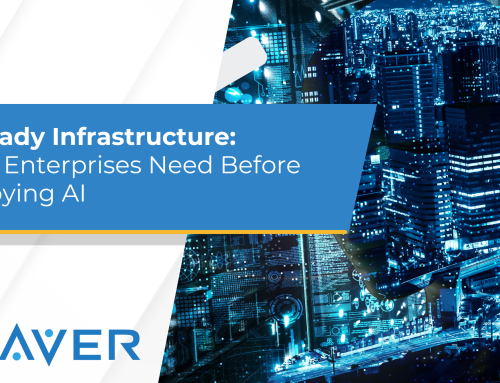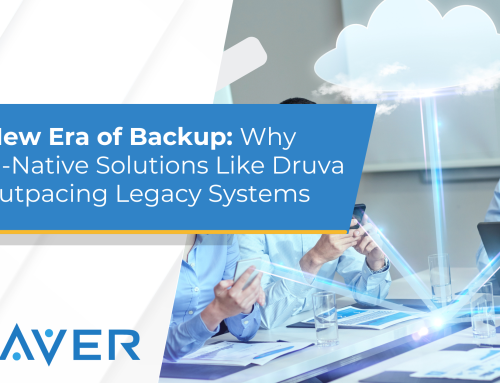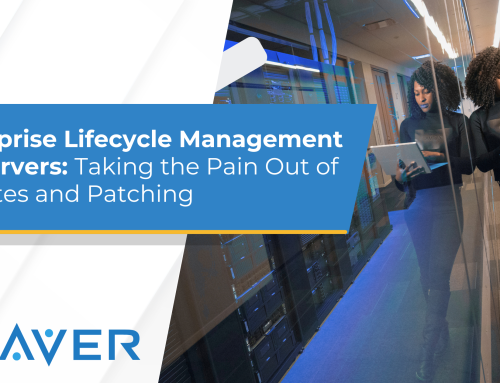Is Your IT Holding You Back Without You Noticing?
Most organizations don’t realize their infrastructure is aging until problems start to pile up—slower systems, rising maintenance costs, unexpected downtime, and security vulnerabilities. These issues rarely appear all at once. Instead, they creep in quietly over time.
What looks like “normal wear and tear” might actually be putting your business at risk. The longer outdated systems remain in place, the harder and more expensive they become to maintain—and the more they limit your ability to innovate, scale, and stay secure.
That’s where Enterprise Lifecycle Management (ELM) comes in.
The Hidden Risks of Aging IT
Aging infrastructure introduces a wide range of challenges that often go unnoticed until they become urgent:
-
Frequent Downtime: Older hardware and software are more prone to failure, causing costly disruptions to operations.
-
Security Gaps: Unsupported systems can’t keep up with modern cyberthreats, exposing your organization to risk.
-
Higher Costs: Maintenance, energy consumption, and support costs rise as equipment becomes outdated.
-
Limited Innovation: Legacy systems may not support the tools, platforms, or integrations your organization needs to grow.
Over time, these quiet issues build up, leading to reduced performance, compliance issues, and lost opportunities.
Why IT Infrastructure Ages
There are two major components to aging infrastructure: hardware and software.
-
Hardware degradation happens naturally. Components wear down, warranties expire, and end-of-life dates pass. Aging hardware can’t handle newer workloads and consumes more resources to maintain.
-
Software aging is more subtle but just as critical. Over time, accumulated updates, outdated configurations, and lack of vendor support lead to bloated, unreliable systems.
Even if everything still “works,” you’re likely paying more for less performance—and exposing your organization to risk in the process.
How Enterprise Lifecycle Management Solves Aging IT
Enterprise Lifecycle Management (ELM) is a proactive, strategic approach to managing IT assets from acquisition to retirement. It ensures your infrastructure is modern, efficient, and aligned with your business goals.
Here’s how ELM helps:
1. Complete Asset Visibility
We help you track and assess all IT assets, identifying what’s aging, what’s at risk, and what needs to be replaced. With this visibility, you can plan refresh cycles with confidence.
2. Proactive Refresh Planning
Rather than waiting for systems to fail, ELM enables you to refresh equipment and software on a predictable schedule—minimizing downtime and maximizing performance.
3. Consistent Updates & Maintenance
ELM includes regular patching, firmware updates, and configuration audits, so your systems stay secure and optimized.
4. Secure and Responsible Decommissioning
When it’s time to retire hardware, ELM ensures data is wiped and equipment is properly recycled or repurposed—keeping your organization compliant and sustainable.
What ELM Means for Your Business
Organizations that adopt ELM benefit from:
-
Lower operating costs through reduced maintenance and fewer emergency repairs
-
Improved security by phasing out unsupported systems and applying regular updates
-
Stronger performance with optimized, modern infrastructure
-
Better budgeting thanks to planned refresh cycles and lifecycle visibility
-
Increased agility to adopt AI, automation, and next-gen IT solutions with ease
Simply put, ELM helps you move from reactive IT to strategic IT—giving you the flexibility to innovate while staying protected.
Make This the Summer You Refresh Your IT
With the slower pace of summer, now is the perfect time to reassess your infrastructure, plan for upgrades, and get ahead before peak season. Whether you’re dealing with outdated servers, bloated software, or unreliable systems, we’re here to help.
Our Enterprise Lifecycle Management services are designed to take the guesswork out of IT planning—giving you a clear path forward with minimal disruption.
Ready to Future‑Proof Your Infrastructure?
Refresh your IT this summer—discover how our Enterprise Lifecycle Management services make it simple.
➡️ Contact us today and learn how we can help you with our Enterprise Lifecycle Management Services.







